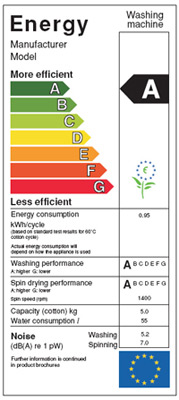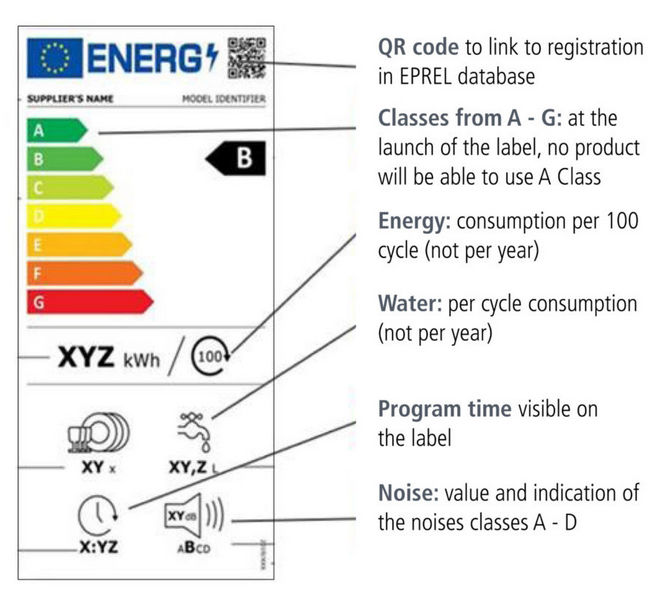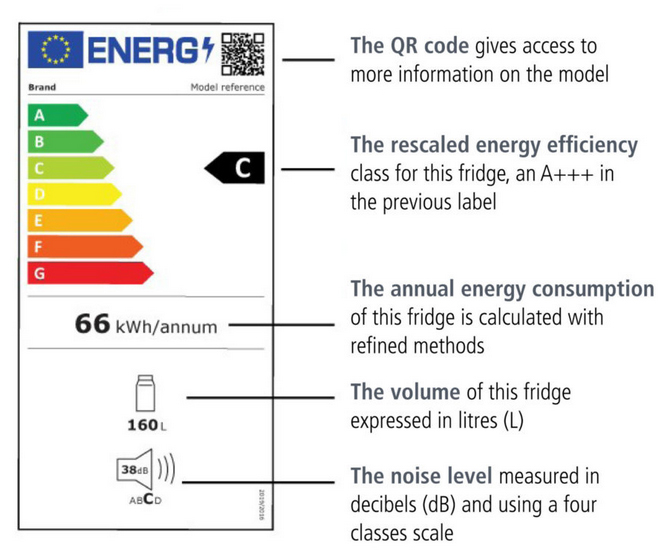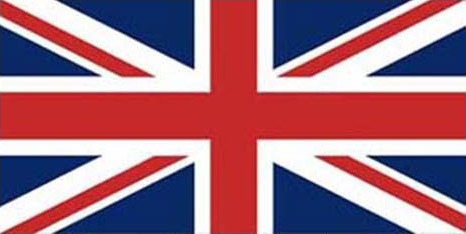Kitchen Appliance EU Energy Ratings:
As from 1st March 2021 there is an official switchover to a new revised energy ratings system, these changes are explained below the existing changes shown first as you may know it now.
 To the left is a copy of the pre March 2021 label
To the left is a copy of the pre March 2021 label 
If you want to save money on your electricity bill then make sure you buy an energy efficient product.
• The EU energy label which was introduced in 1992, rates products from 'A' (the most efficient/least energy used), down to 'G' (the least efficient/most energy used).
• Any '+' sign given after 'A' makes the appliance even more efficient.
• An updated EU energy label came out in June 20th 2011. Dishwashers, washing machines and refrigeration will use - A+ A++ A+++
Additionally the label showed the amount of energy that the product used in an hour (kWh).
This will cover the A-10% and A-20% being used at present by some manufacturers in their brochures or on websites, showing they have 'x' percent better energy efficiency compared to the EU entry level 'A'.
The old EU energy labels shown above add A+, A++, A+++, for washing machines and dishwashers. For refrigeration A+++ was added.
For ovens and tumble driers the revised labels came out at the end of 2011 and during 2012 so other confusing signs were be used by manufacturers up to then.
Warning: A-10% is not the same as A+ or A-20% as A++ as the new 2021 EU label has revealed below, the definitions and measurements standards have now changed.
As usual it was all very confusing as with all things from the EU and even with the revised changes remained so upto now.
Some manufacturers have already 40 to 50% more efficient appliances 'ready-to-go' from the factory, so are moving ahead quicker than the EU energy label can keep up!
By law, this label must be shown on all refrigeration and laundry appliances, dishwashers, electric ovens and lightbulb packaging sold.
As from 1st March 2021
As a result of the development of energy efficient appliances, nearly all large domestic appliances are highly rated on the energy label scale and clustered between A++ and A+++.
The EU energy label scale will be adjusted to reintroduce the simpler A to G scale, with no plusses (++) making it easier for consumers to compare products.
There is a transition period where both energy labels will be supplied with the appliance to make it easier to compare. This ensures that whenever the product is purchased, you have the correct label to meet the current regulation.
Please note that whilst both labels are different, they are both applicable to the product.
The rescale means that products which may currently be A+++ energy class, will end up being D and E in the new structure. This does not mean that they are less energy efficient, in fact many of the changes Caple have made mean that the products you will see as D or E actually use less energy than a current A+++ product.
Due to this, there will be a number of product code changes for these categories in the near future. In many cases the changes will be internal technical alterations and the products will be visually the same.
Here is an example of the new labels for a dishwasher on the left and a refrigerator on the right.



The most efficient products also carry the energy saving recommended logo shown above top right.
The energy ratings:
The more energy efficient an appliance is, the more money you can save - and the more you help the environment. By buying a more efficient model, you′re not compromising when it comes to performance either.
Energy consumption and running costs:
This shows how much electricity is used under standard operating conditions, measured in kWh / year "kilowatt hours" for refrigeration or kWh/cycle for washing and other appliances.
You can work out the average annual running cost and saving by multiplying the KWh consumption figure by 13p (which is the average unit price of UK electricity) - your actual savings will depend upon the exact consumption figure.
Performance in other areas:
Laundry and dishwashing labels also have ratings for washing, spin and / or drying performance. The A-G indicators here are similar to the main efficiency ratings, and are based on standard industry testing - the test cycle used is on the label. ("A" rating being the best).
Noise:
Some models will also include information on the noise of the product. The lower number shown here the less noise the appliance emits.

For more tips & information on Appliance Energy Ratings, please visit this site run by the UK Energy Saving Trust.
Here at Dream Kitchens our experienced designers can help you make the right choice for both you and your home.
Please contact us for further info.
Share this page:



